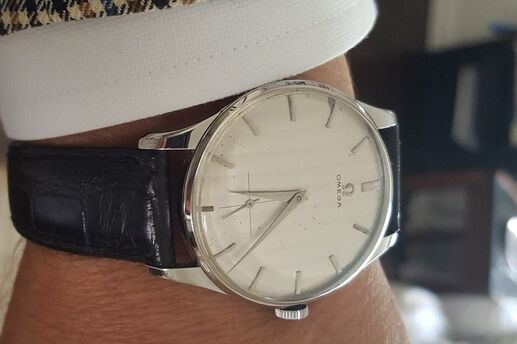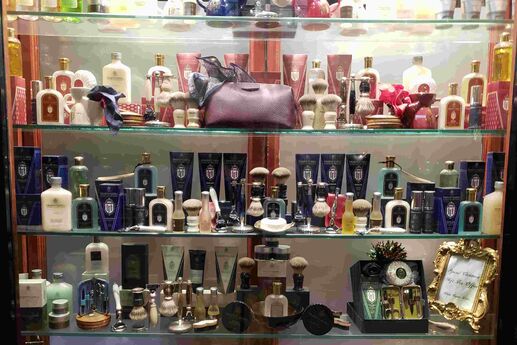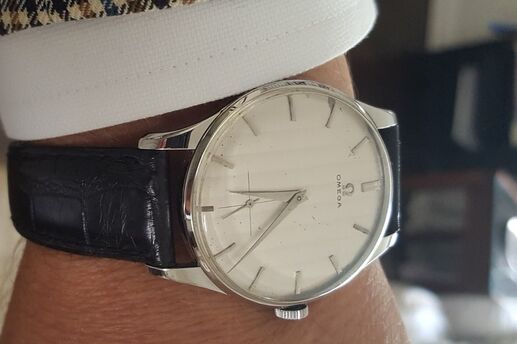Turbocharge Your Shaving Kit
Shaving cream and a razor are just a start. To take your personal grooming to the next level, equip your Dopp bag with these tools.
The humble Dopp kit -- named after its early 20th century inventor, leather craftsman Charles Doppelt -- has come a long way since it was a standard-issue razor-and-toothbrush carrier for WWII GIs. Just as modern man’s grooming needs have evolved to include more than a bar of soap and bucket of warm water, so have the innards of his Dopp kit.
Think of it as your personal arsenal of grooming weapons -- whether you’re headed off on a relief mission or simply prepping for another war at the office. Here’s everything you need:
1. Face wash
Put down the bar of soap and step away from the sink. Seriously. Now. Soap is drying and irritating. The trick here is to dissolve dirt and clean skin without stripping away all the oil, which can actually cause your skin to overcompensate by producing excess oil. And remember, when it comes to your face, you don’t want to over-cleanse. Once a day, preferably before you shave, is enough.
What to look for:
If you have dry skin, select a cream-based cleanser. If your face looks like an oil spill, look for an oil-free, soap-free liquid. And if you’re especially prone to breakouts, choose one that contains salicylic acid.
2. Pre-shave oil
Think of this as a primer for the second coat (that would be the shave cream). It softens skin and hairs to prevent razor burn and provides a super-slick surface for the razor to glide across.
What to look for:
Opt for natural plant-based softeners like coconut oil or olive oil, instead of petroleum-based products, which can clog pores.
3. Sensitive skin shave cream
Even if you don’t think you have sensitive skin, choosing a “sensitive skin” cream, gel or foam can help protect against redness and irritation.
What to look for:
Opt for one that contains aloe, glycerin and mineral oil -- key ingredients that soften and soothe.
4. Shaving brush
This old-school tool is making a major comeback thanks to properly educated barbers and sophisticated consumers. It doesn’t just feel good on your skin, it’s backed by actual science: The gentle action of the bristles exfoliates skin and removes dead skin cells, then fluffs up your whiskers so they’re standing straight up for a closer shave.
What to look for:
Select one made out of badger hair -- it’s more expensive than boar but is higher-quality and softer on your face. (Plus, it will last a lifetime.)
5. Razor
If you’re still using the cheap disposable kind or one with too few blades, it’s time for a major upgrade.
What to look for:
Research has actually demonstrated the benefits of multiple-blade razors. The basic science is that the first blade engages the hair and pulls it out of the follicle so that the subsequent blades can cut the hair further down the shaft. Translation: a closer, smoother shave with less risk of nicks and cuts.
6. Styptic pencil
This short, medicated stick is a blast from the past that helps stop bleeding fast if you get a nick or cut. It stings but it works.
What to look for:
Aluminum sulfate in the ingredient list.
7. Aftershave
Use an aftershave gel or balm to calm the skin and reduce irritation.
What to look for:
Skip alcohol-based products, which can cause irritation and dryness. Instead, choose one that contains aloe and vitamin E -- Mother Nature’s original soothing and healing agents.
8. Electric nose and ear hair trimmer
You don’t need two separate tools -- one will do.
What to look for:
Look for an electric rotary version: It uses a rotary blade system that cuts in a circular motion to trim along the inside of the walls without getting too close. Other key features to look for are a built-in LED light (to help guide you in those dark cavities) and an integrated vacuum system (to collect hair as it trims).
9. Moisturizer
Contrary to every TV ad, face cream isn’t just about preventing wrinkles and fine lines: It helps keep your skin hydrated, protects against sun and wind, and can even promote skin cell regeneration.
What to look for:
If your skin is dry, look for ingredients like shea butter and aloe. If you’re prone to breakouts, look for an oil-free version labeled “noncomedogenic.” Either way, always choose one that contains sunscreen. (The American Academy of Dermatology recently upgraded its minimum SPF recommendation from 15 to 30.)
10. Eye cream
The finest, most delicate skin on your face is around your eyes. That’s also the first place to show signs of aging (like puffiness, crow’s feet and dark circles).
What to look for:
If your main objective is to reduce puffiness, pick a product that contains cucumber and caffeine (to soothe and tighten) with a roll-on application -- the simple act of rolling it on helps redistribute lymphatic buildup under the eye skin. To combat dark under-eye circles, look for a product with vitamin K -- studies have shown it can be an effective treatment because our body uses this vitamin in clotting.
11. Lip balm
Let’s face it: No one wants to kiss a pair of cracked smackers.
What to look for:
A non-petroleum-based product. It moisturizes without drying and promotes faster healing.
12. Stainless steel
This blanket category goes for all those little metal doodads: grooming scissors, nail clippers and tweezers. And when we say stainless steel, we mean it: You might be tempted to cut corners and go for the cheapest versions, but when you’re manscaping and clipping your sensitive zones, do you really want to risk diving in with rusty, dull blades? Didn’t think so. >
What to look for:
Select tools that can accommodate the size of your mitts. More and more companies are coming out with “man-sized” grooming tools for this very reason.
13. Hair styling products
Here you have many options, including gel, for an all-day, extra-strong hold with a bit of a wet look a la “Mad Men,” or paste/putty for a textured and spiky bed-head look.
What to look for:
If you’re a gel guy, look for a glycerin-based version for added moisture. If you swing for the paste/putty league but can’t decide which team to join, remember this: Putty offers a stronger hold (similar to a gel), while paste allows you to go back and restyle your mop throughout the day.






